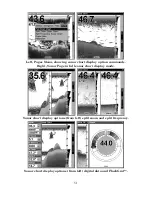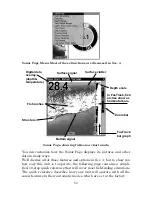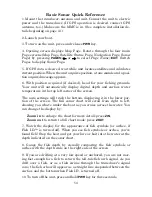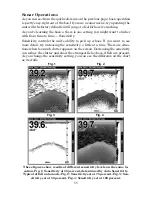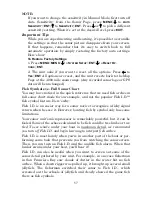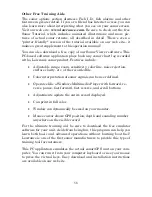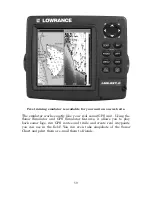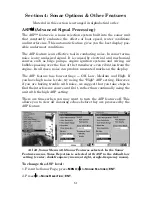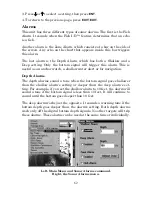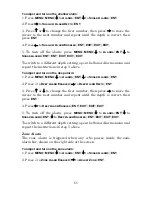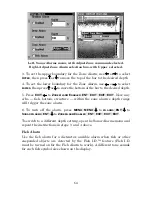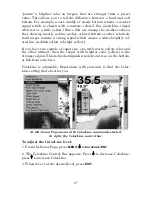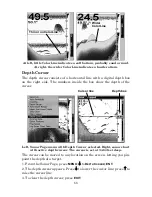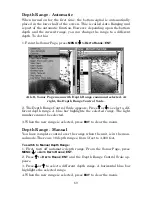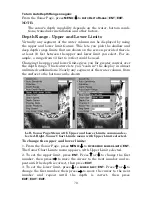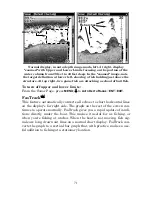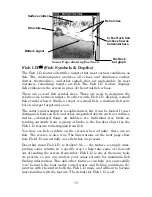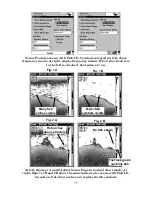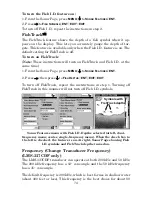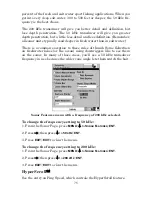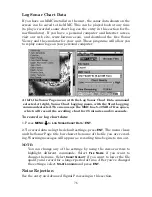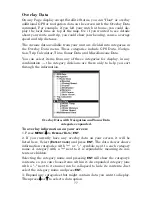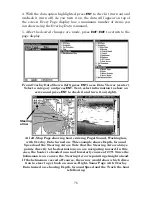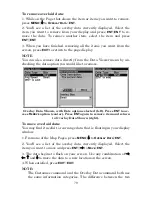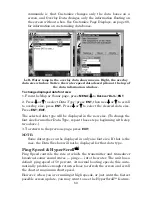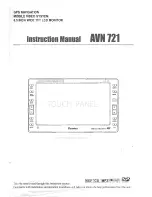
65
Sonar Alarms menu with Fish Alarm selected. The check box to the left
is blank, indicating the alarm is turned off.
To turn the fish alarm on:
1. Press
MENU
|
MENU
|
↓
to
A
LARMS
|
ENT
|
↓
to
S
ONAR
A
LARMS
|
ENT
.
2. Press
↓
to
F
ISH
A
LARM
|
ENT
|
EXIT
|
EXIT
|
EXIT
.
3. To turn off the alarm, press
MENU
|
MENU
|
↓
to
A
LARMS
|
ENT
|
↓
to
S
ONAR
A
LARMS
|
ENT
|
↓
to
F
ISH
A
LARM
|
ENT
|
EXIT
|
EXIT
|
EXIT
.
Calibrate Speed
The speed sensor can be calibrated to compensate for inaccuracies. Be-
fore you change the setting, first calculate the percentage that the
speed is off. You will enter this percentage in a moment.
For example, if you figure the sensor is reading 10 percent faster than
actual speed, you will enter – 10 in the calibration window. If the sen-
sor is reading 5 percent slower than true speed, you will enter + 5 in
the window.
A good way to gauge your speed sensor's performance is to compare its
reading with the ground speed measured by your unit's GPS functions.
When you make a run to compare GPS ground speed to speed sensor
speed, perform your test in relatively calm water free of current, if pos-
sible. (Unless, of course, you are taking the speed of current into con-
sideration when making your calculation.) After you have a correction
figure, here's how to enter it:
1. Press
MENU
|
MENU
|
↓
to
S
ONAR
S
ETUP
|
ENT
|
↓
to
C
ALIBRATE
W
ATER
S
PEED
|
ENT
.
2. Enter the number you calculated earlier: press
↑
or
↓
to change the
first character (+ or –), then press
→
to move the cursor to the next
number and repeat until the percentage is correct, then press
EXIT
.
Summary of Contents for LMS-332C
Page 20: ...12 Notes ...
Page 52: ...44 Notes ...
Page 61: ...53 Notes ...
Page 68: ...60 Notes ...
Page 106: ...98 Notes ...
Page 110: ...102 Notes ...
Page 190: ...182 Notes ...
Page 208: ...200 Notes ...
Page 212: ...204 Notes ...
Page 213: ...205 Notes ...

